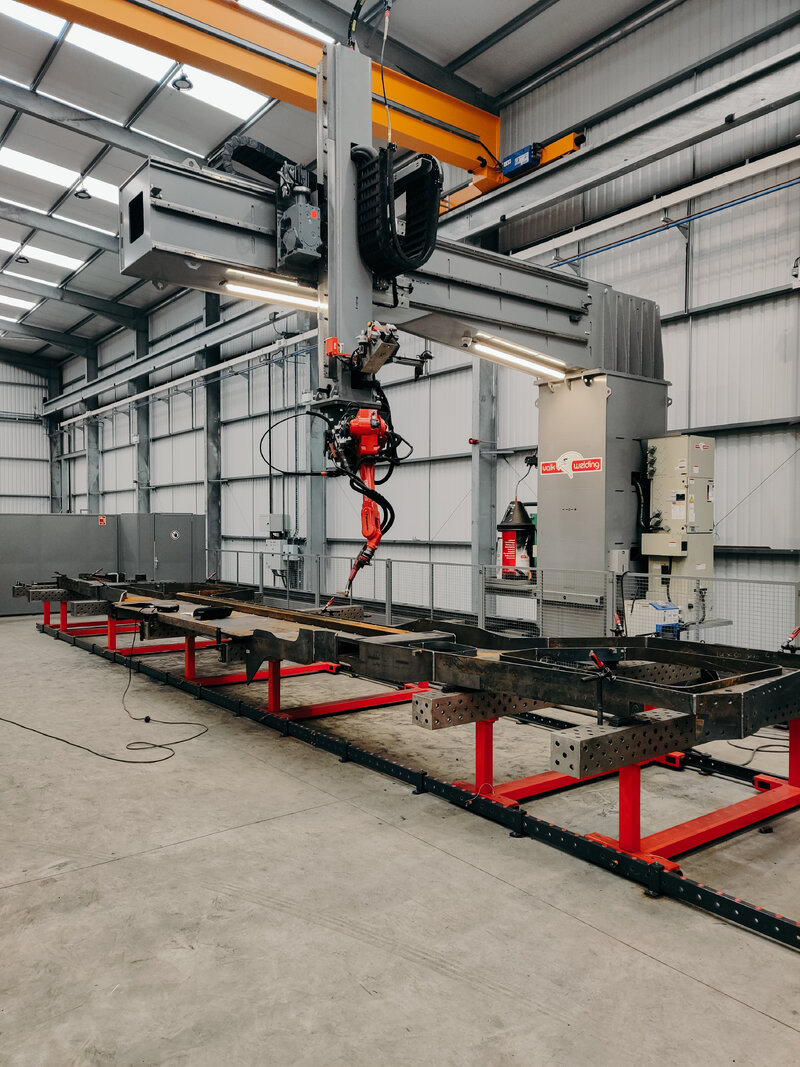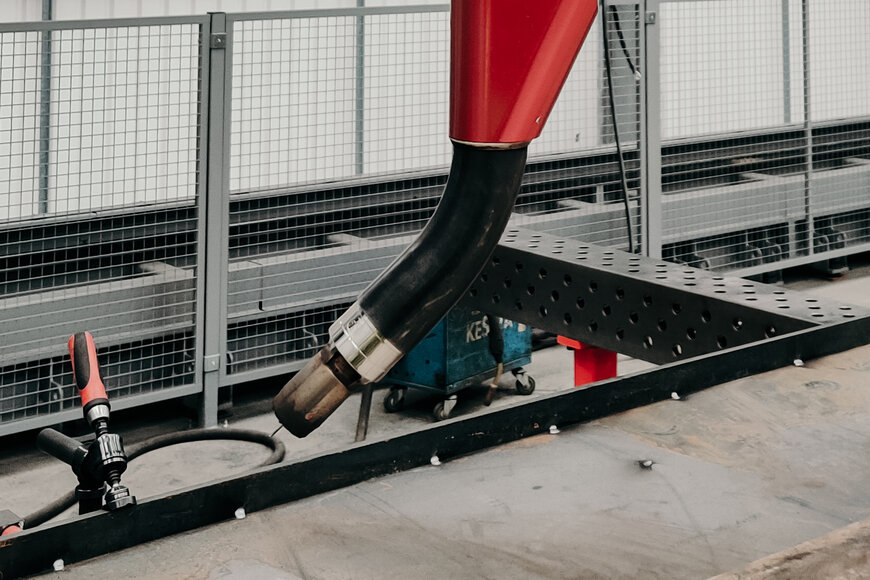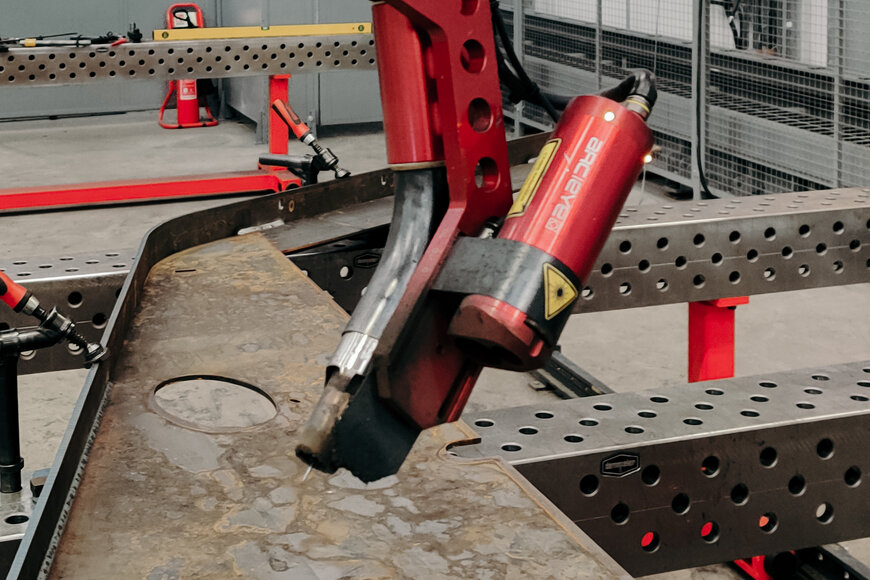High-mix, low-volume
"The large frame parts we weld involve a great deal of variation and small numbers, with welding times sometimes more than 20 hours. If you want to weld those robotically, that means a lot of programming work. In addition, conventional seam searching over the long lengths takes a lot of time. On all these points, Valk Welding has developed a lot of experience and solutions that other robot integrators cannot offer," explains Alan Donnelly. Valk Welding proposed a 3-axis system with a suspended welding robot on a track. That system was installed in the summer of 2021, including programming of the first side frames.
Full options
To minimize welding times, the cell is equipped with many options. For weld seam searching and tracking, a combination of Touch Sensing (wire searching) and seam tracking with the CSS Arc-Eye laser sensor is used. With Touch Sensing, the welding robot only searches the starting point, then the Arc-Eye follows the weld seam in real time. "This allowed us to greatly reduce the search time," explains Conor Burrows, who, as Mechanical/Manufacturing Engineer, handles the entire automation process. In MIS (Management Information System) we monitor the robot's duty cycle and record the welding data. We are already at 75% duty cycle, while we have only been on the road for six months." For the welding fume extraction, a welding torch with integrated welding fume extraction is included, which extracts over 98% of the welding fumes directly at the source and filters them with a high vacuum unit.
Automation of programming process
One of Four Dee's main objectives was to reduce the programming time for single pieces and small quantities. For most SMEs in a high-mix, low-volume production situation, programming time is still an obstacle, according to Alan. It was decided to enter a pilot project with Four Dee for the ARP software that Valk Welding is currently developing. "We import the customer's CAD files as STEP files into ARP and then manually update them in DTPS. Although the ARP software is still in the development phase, we are already seeing significant time savings from days/weeks to hours/days for one product." explains Conor Burrows.
Further expansion
The system is equipped with two stations, so you can load and unload in one station while the robot loads in the other.
A second system was completed earlier this year, for smaller parts up to 7 meters in length. "The addition of manipulation gives even more flexibility for welding assemblies. The ultimate goal is to be able to weld complete chassis fully robotized in the near future," Alan Donnely looks ahead.
www.4d-ni.co.uk





